Costus igneus (Insulin Plant)
Top Tropicals Plant Encyclopedia
Botanical names: Costus igneus, Chamaecostus cuspidatus
Common names: Insulin Plant, Fiery Costus, Spiral Flag
Family: Costaceae
Origin: Eastern Brazil










Costus igneus (Chamaecostus cuspidatus) is known as the insulin plant because it may help lower glucose levels for some people with diabetes. Researchers believe it can help lower blood sugar level.
The plant has large, fleshy, smooth turmeric-like spiral leaves that are dark green on top with light purple undersides. The undersides of these large, smooth, dark green leaves have light purple shade. The leaves are spirally arranged around the stem, forming attractive, arching clumps arising from underground rootstocks. The maximum height of these plants is about two feet. The flowers are orange in color, appear to be cone-like heads at the tips of branches. Flowering occurs during the warm months.
Grow Costus igneus in either full sun or partial shade. Costus igneus needs fertile soil, with plenty of moisture. Due to these requirements, it is often planted near water. It makes a nice aesthetic accent in landscaped shrub borders, where the orange flowers will contrast the greens of the shrub border. Planted on two to three foot centers, Costus igneus can act as a tall ground cover, and can help brighten a partially shaded location. Propagation is by division of the clumps, cuttings, or by separating the offsets or plantlets that form below the flower heads.
The species reproduces vegetative by rhizome and birds disperse seeds when they feed on the fruits. Costus products are sometimes called Costus comosus and are edible in nature. The flower petals are edible! The flower petals are quite sweet and nutritious. It's a lower grower and makes a great ground cover. The plant grows very quickly. It is cultivated in India for its use in traditional medicine and elsewhere as an ornamental. It thrives in sunny areas with a little shade. It is a rapid growing plant, that spreads from rhizomes that form attractive foliage around the original root stock.
Costus igneus does well planted in the ground year round in USDA zones 9-11, but is also very suitable for a container garden or above-ground planter. The plant is moderately tolerant of drought. The Insulin Plant makes a beautiful indoor or house plant, perfect for cascading down a wall.
In Siddha medicine, it is known as kostum. It is being cultivated in Kashmir and the Himalayan regions for its root. It is related to the gingers and was originally part of the family Zingiberaceae. But now the Costus species and their kin have been reclassified into their own family, Costaceae.
Studies suggest that Insulin Plant has antimicrobial, antidiabetic, antiproliferative, hepatoprotective properties. The plant is also traditionally used in Ayurvedic medicine for the treatment of diabetes. Recent research indicates that compounds within the Insulin plant help regulate blood sugar levels, supporting these traditional uses and claims. The plant does not actually contain insulin, which is a misnomer, and can lead to confusion. The blood sugar regulating effects of the plant are it's prominent medicinal value, and are currently being assessed by pharmaceutical companies for use in over the counter and prescription based diabetes treatments.
10 benefits of insulin plant:
- Helps to reduce high blood glucose level
- Improves digestion
- Reduces cholesterol level
- Increases energy level
- Promotes weight loss
- Good for skin health
- Prevents heart diseases
- Relieves stress.
Similar plants: Costus igneus (Insulin Plant)
- Costus afer (Spiral Ginger)
- Costus erythrophyllus (Ox Blood Costus)
- Costus fissiligulatus (African Princess)
- Costus lucanusianus (African Spiral Flag)
- Costus malortieanus (Stepladder Ginger)
- Costus productus (Costus)
- Costus sp. (Spiral Ginger)
- Costus sp. ''Variegated'' (Variegated Spiral Ginger)
- Costus speciosus (Crepe Ginger)
- Costus spicatus (Red Button Ginger)
It is known as the insulin plant because it may help lower glucose levels for some people with diabetes. Researchers believe it can help lower blood sugar level. The plant has large, fleshy, smooth turmeric-like spiral leaves that are dark green on top with light purple undersides. The undersides of these large, smooth, dark green leaves have light purple shade. The leaves are spirally arranged around the stem, forming attractive, arching clumps arising from underground rootstocks. The maximum height of these plants is about two feet. The flowers are orange in color, appear to be cone-like heads at the tips of branches. Flowering occurs during the warm months.
10 benefits of insulin plant:
- Helps to reduce high blood glucose level
- Improves digestion
- Reduces cholesterol level
- Increases energy level
- Promotes weight loss
- Good for skin health
- Prevents heart diseases
- Relieves stress.
Recommended Fertilizer: SUNSHINE Robusta - Rapid Growth Booster
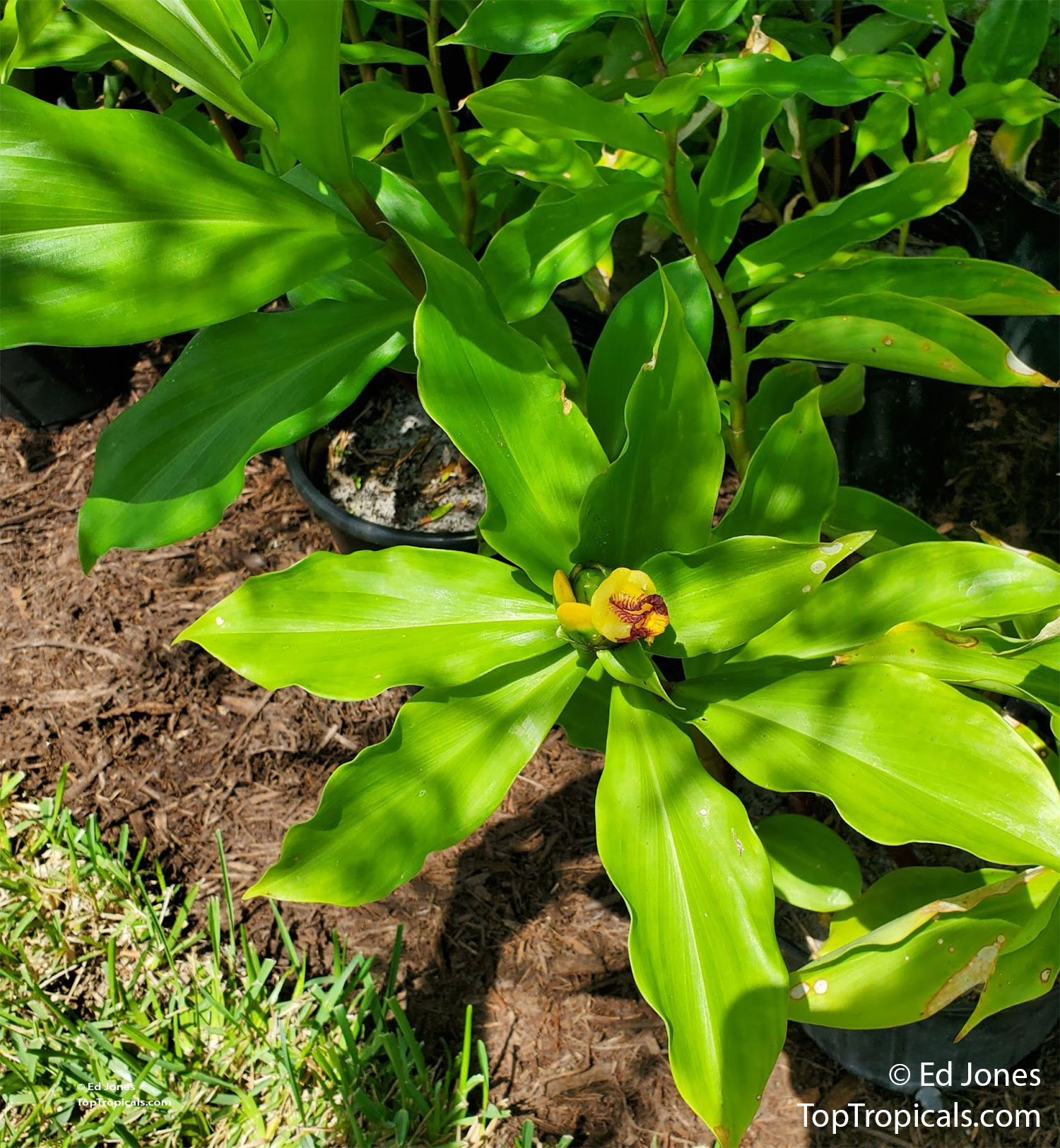
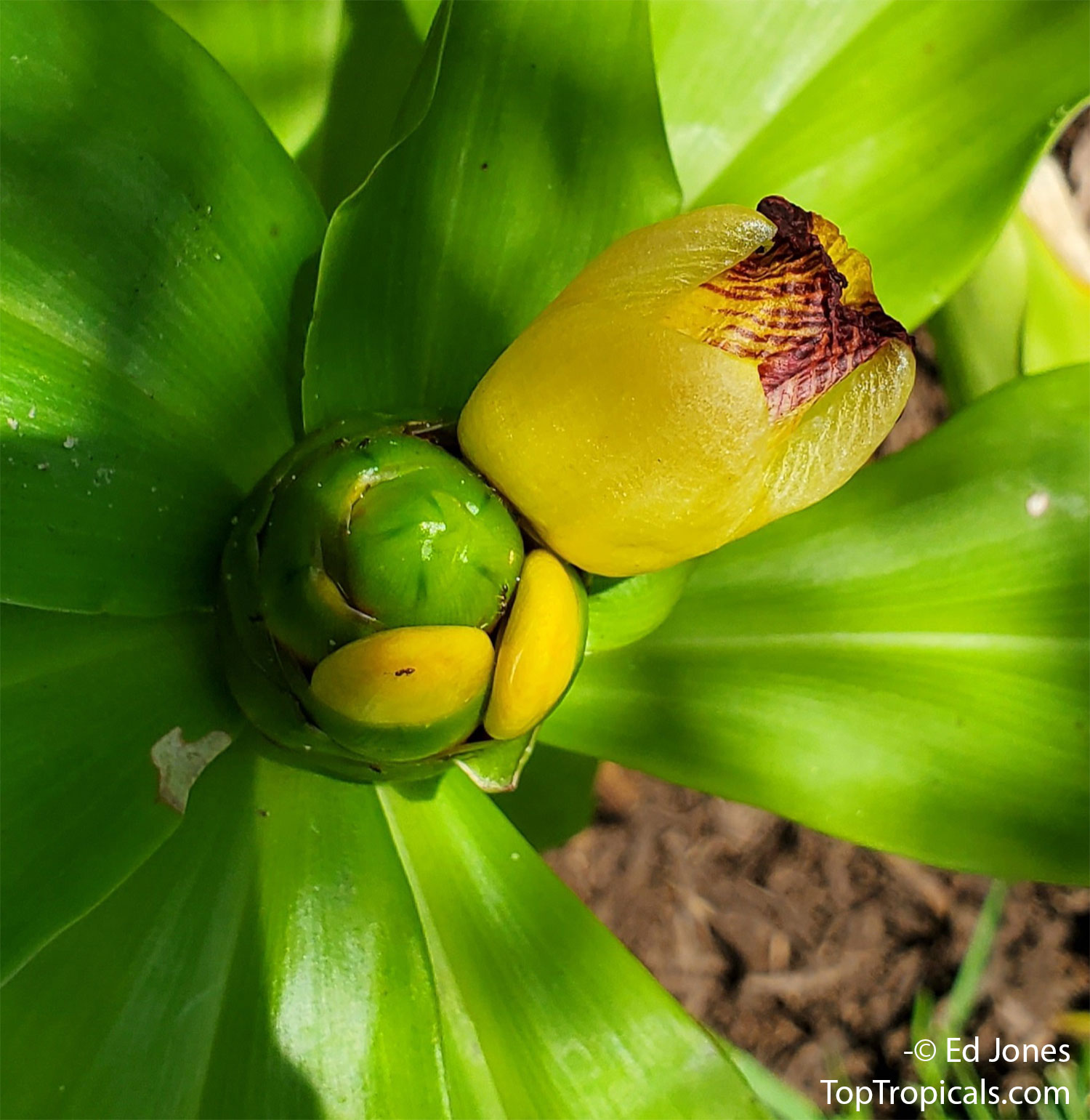
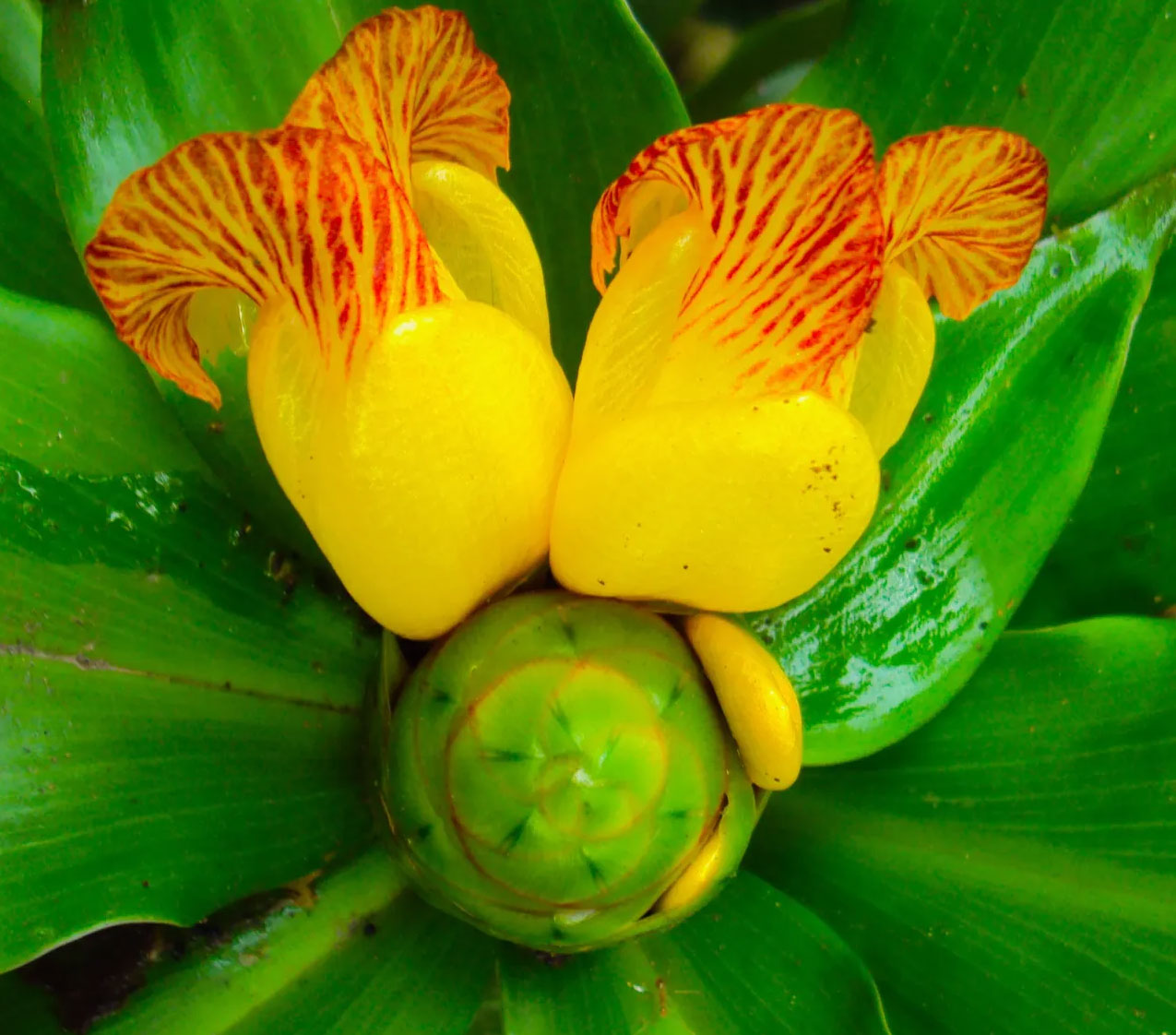
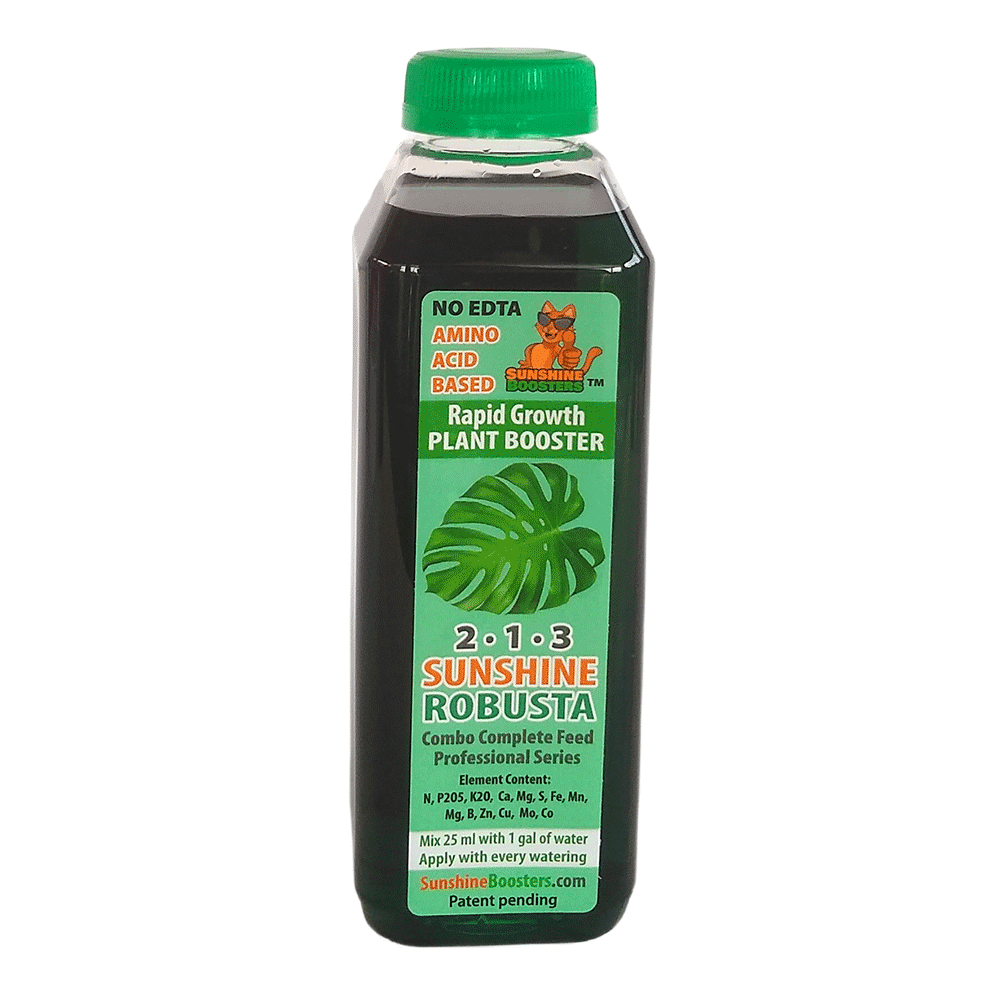 SUNSHINE Robusta (NPK 2-1-3) - Vegetative Vigor Booster for every watering. Formulated especially for vegetative stage of plant development. Can be used for a quick build-up of vegetative growth, for establishing and recovering damaged plants that lost many leaves. This is an eco-friendly nutrition booster that can be used for edibles and organic gardens. Can be used for daily feeding with every watering. Scientifically-balanced stable formula is organic Amino-acid based and has NO EDTA chelators to eliminate nutrients lockup; it does not affect crop taste. Organic Amino acids greatly enhance stability of all Sunshine boosters and provide excellent absorption of trace elements. Pollinating insects friendly.
SUNSHINE Robusta (NPK 2-1-3) - Vegetative Vigor Booster for every watering. Formulated especially for vegetative stage of plant development. Can be used for a quick build-up of vegetative growth, for establishing and recovering damaged plants that lost many leaves. This is an eco-friendly nutrition booster that can be used for edibles and organic gardens. Can be used for daily feeding with every watering. Scientifically-balanced stable formula is organic Amino-acid based and has NO EDTA chelators to eliminate nutrients lockup; it does not affect crop taste. Organic Amino acids greatly enhance stability of all Sunshine boosters and provide excellent absorption of trace elements. Pollinating insects friendly.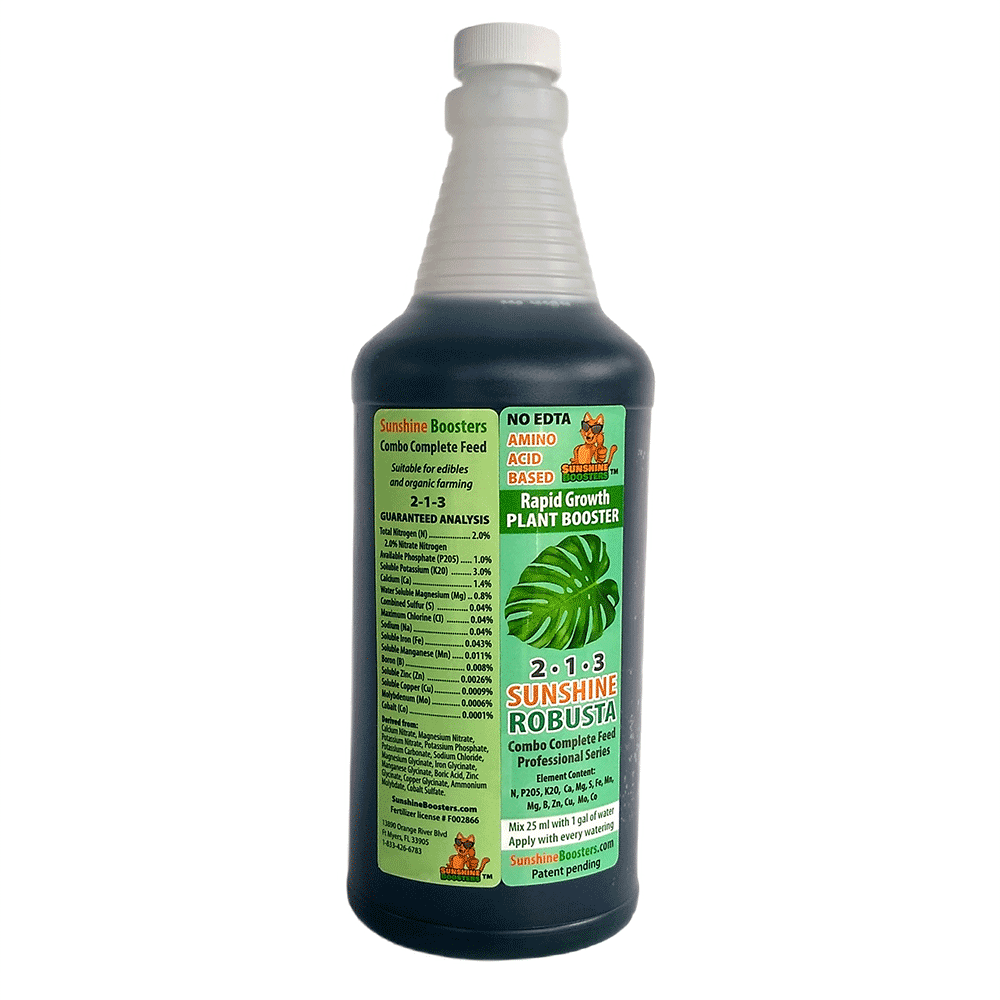 SUNSHINE Robusta (NPK 2-1-3) - Vegetative Vigor Booster for every watering. Formulated especially for vegetative stage of plant development. Can be used for a quick build-up of vegetative growth, for establishing and recovering damaged plants that lost many leaves. This is an eco-friendly nutrition booster that can be used for edibles and organic gardens. Can be used for daily feeding with every watering. Scientifically-balanced stable formula is organic Amino-acid based and has NO EDTA chelators to eliminate nutrients lockup; it does not affect crop taste. Organic Amino acids greatly enhance stability of all Sunshine boosters and provide excellent absorption of trace elements. Pollinating insects friendly.
SUNSHINE Robusta (NPK 2-1-3) - Vegetative Vigor Booster for every watering. Formulated especially for vegetative stage of plant development. Can be used for a quick build-up of vegetative growth, for establishing and recovering damaged plants that lost many leaves. This is an eco-friendly nutrition booster that can be used for edibles and organic gardens. Can be used for daily feeding with every watering. Scientifically-balanced stable formula is organic Amino-acid based and has NO EDTA chelators to eliminate nutrients lockup; it does not affect crop taste. Organic Amino acids greatly enhance stability of all Sunshine boosters and provide excellent absorption of trace elements. Pollinating insects friendly.